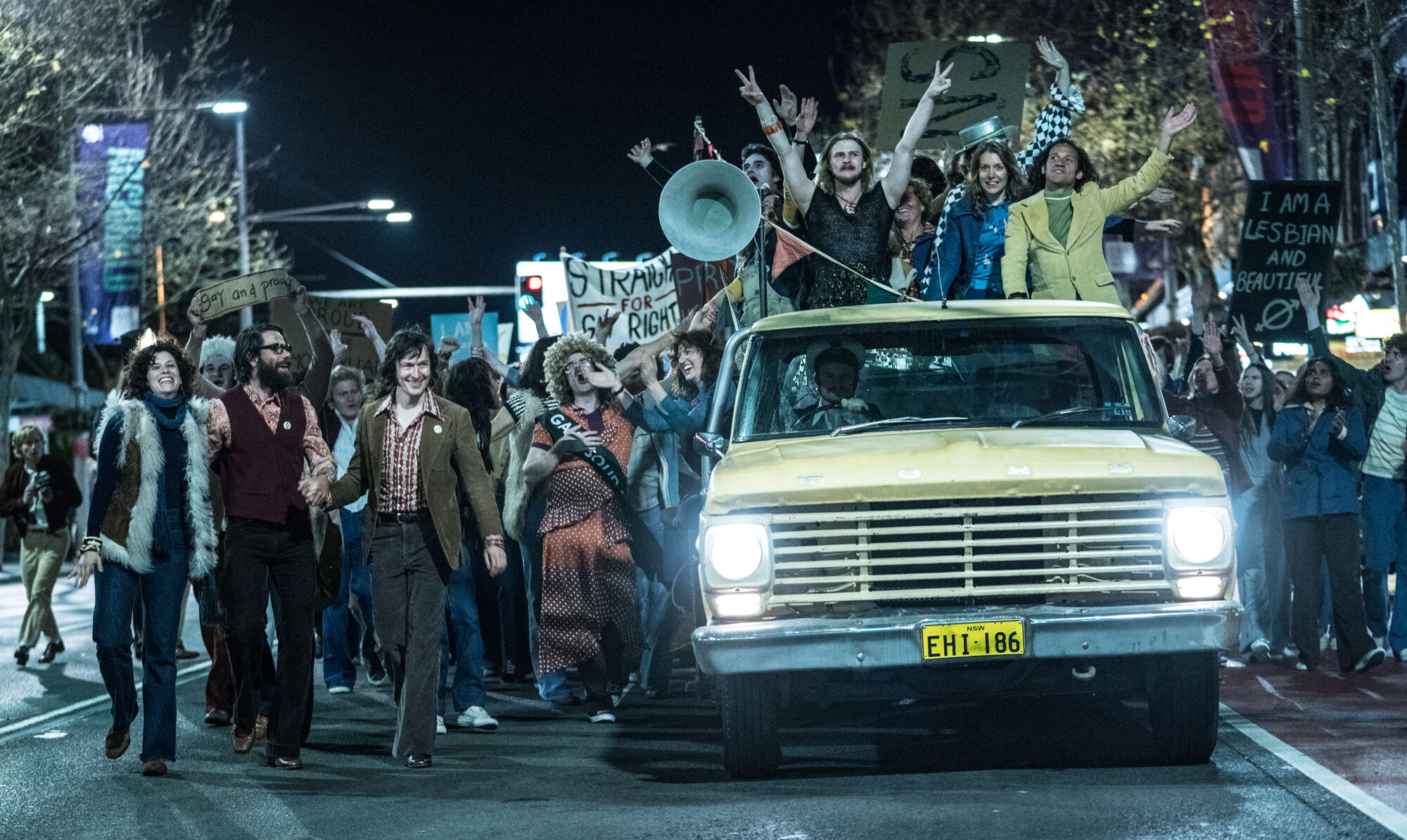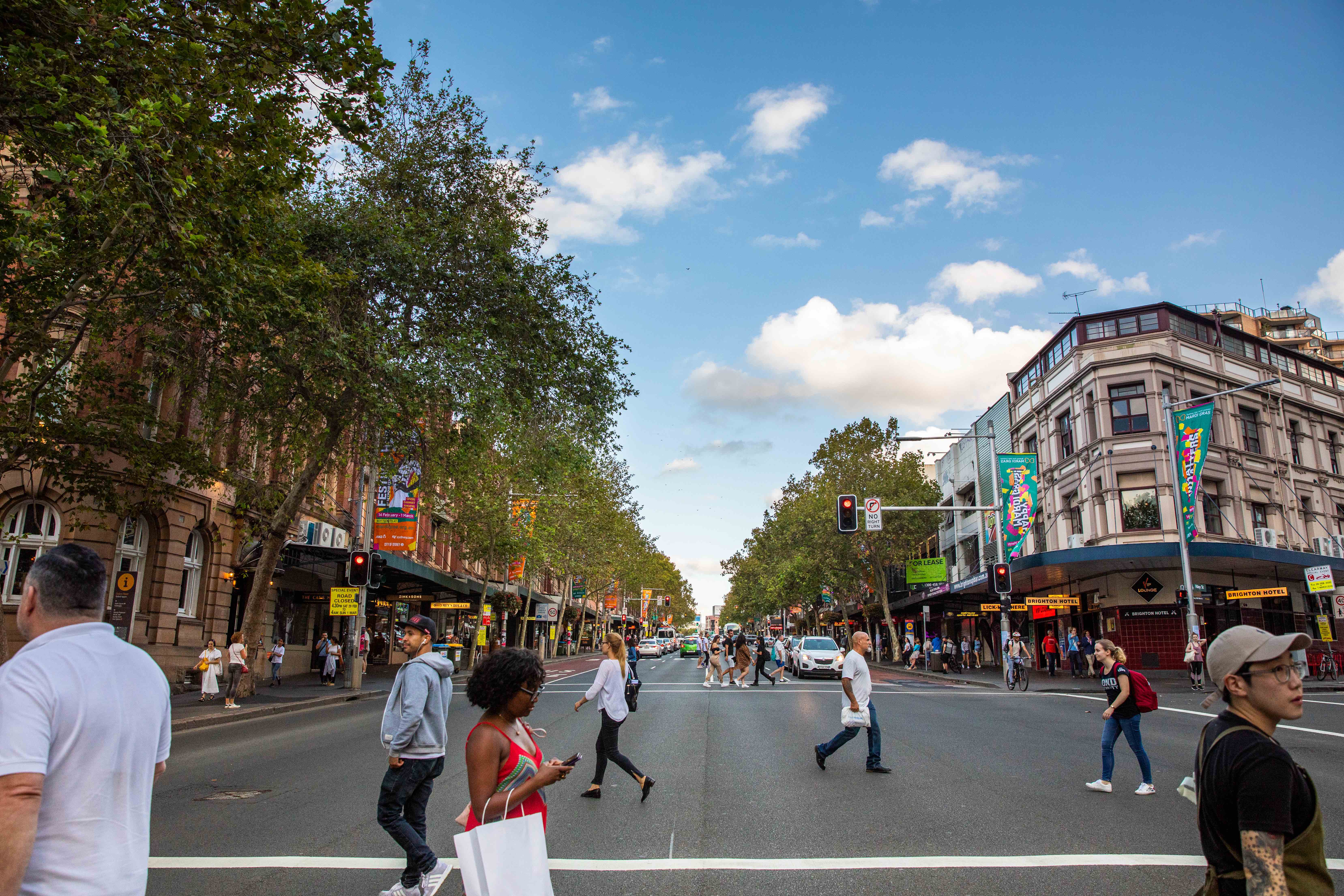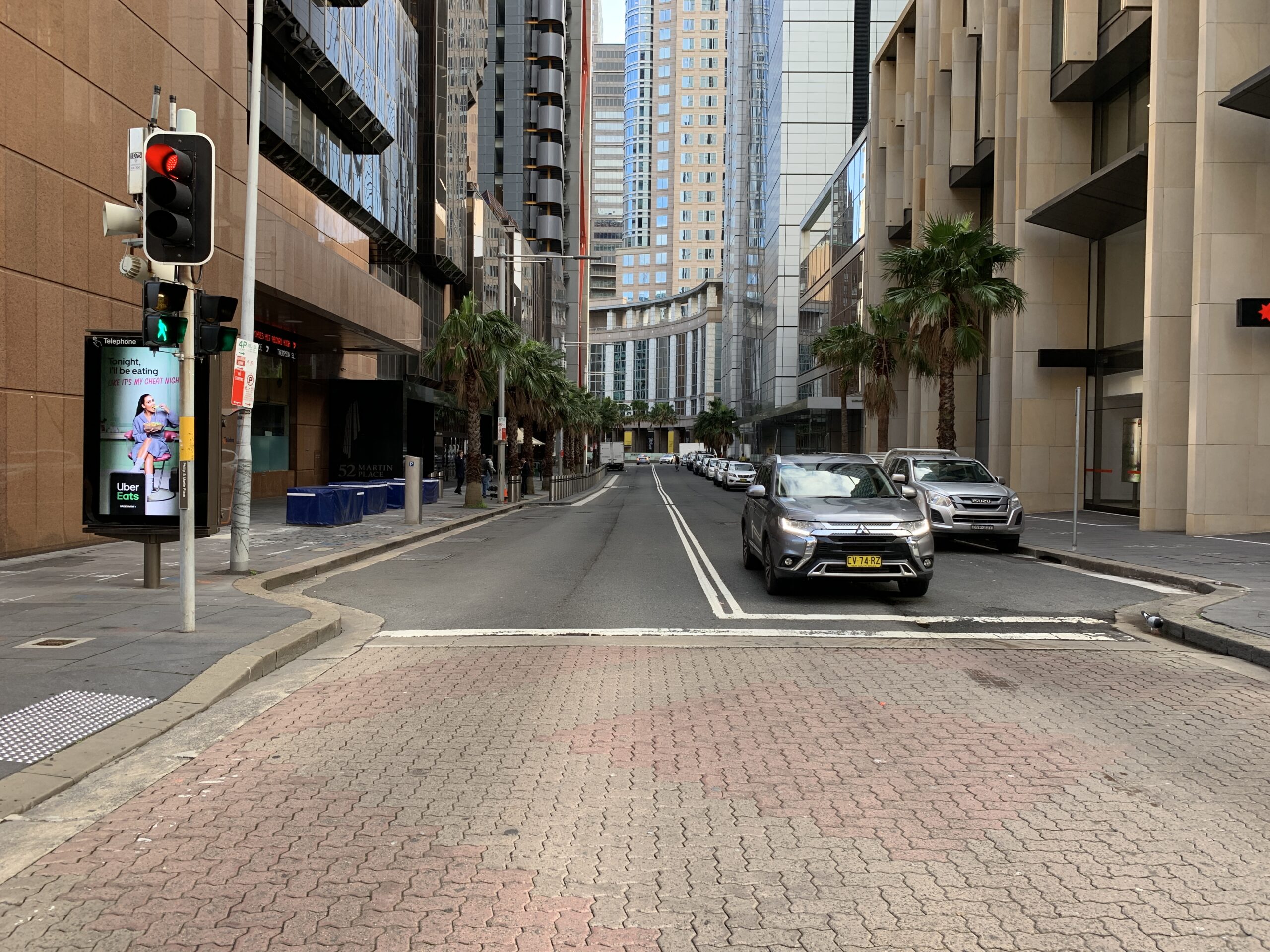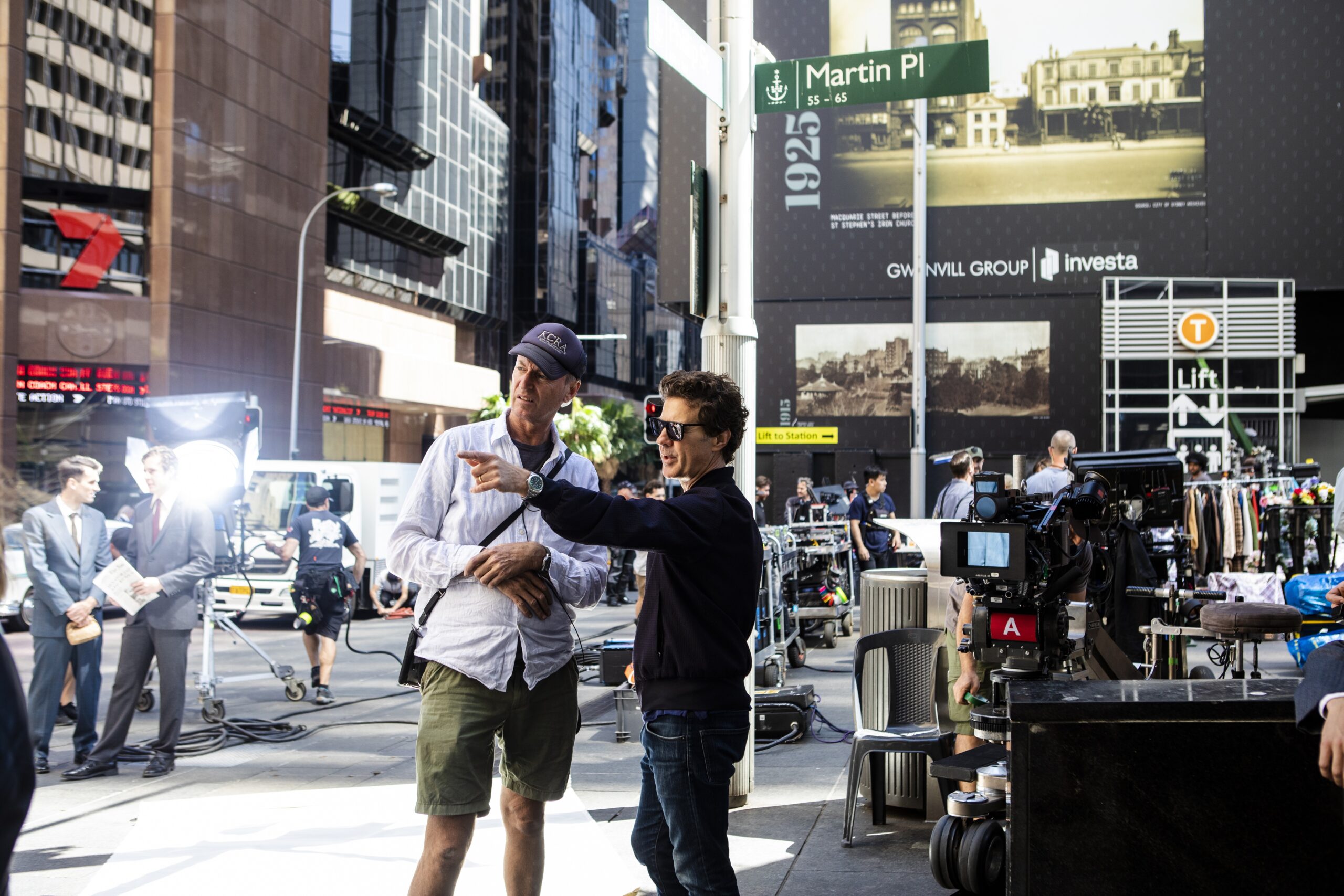
In a year defined by the impact of a global pandemic, New South Wales local councils and government agencies have worked hard to help the screen sector get back on its feet by permitting hundreds of filming applications ‘on location’ across the state.
In NSW’s capital city, the small dedicated team at the City of Sydney continues to champion filmmakers and their productions by permitting filming across their 33 city suburbs, and as a direct response to COVID-19, by supporting our screen industry with a generous fee waiver initiative for all filming activity in their council.
Screen NSW talks to City of Sydney Manager Film Liaison Simon Marshall about their filming team and the year that was.
As the first point of call for filming on-streets, roadways and public land under City of Sydney ownership, can you tell us a little bit about you and your team’s day-to-day filming roles?
Since I started at the council as the sole Film Liaison Officer nearly 7 years ago the team has expanded over the years to meet the growing workload and now includes four Filming and Event Coordinators. As a team we are a one-stop shop for film permissions in outdoor public spaces under the ownership/control of City of Sydney. I also manage the outdoor filming and events department as a whole.
Day-to-day we speak with screen professionals as well as act as a conduit for discussions with other internal departments to facilitate approvals and special requests. We also provide expert advice on avenues for approvals and how to achieve the screen productions’ proposals.
Towards the end of March 2020 (without full vision of the impact of COVID-19), the City of Sydney advised all filming fees for the City of Sydney’s areas would be waived for six months. This proactive measure has been generously extended to March 2021. Can you give us a bit of background on this initiative and any feedback you have had from the sector?
The City of Sydney has always been film-friendly and a big supporter of cultural and creative industries. We recognise that these industries are not only extremely important sectors for the cultural fabric of Sydney and NSW as a whole, but are also large employers of independent screen professionals and small businesses. So, when COVID-19 restrictions first came into effect, the council reacted quickly to assess how we could support these industries and this initiative formed part of the now formalised Community Recovery Plan.
Despite early COVID-19 restrictions and ‘lock-down’ we believed waiving all applicable filming related fees would provide some assistance to the screen productions that were able to continue to operate safely within the City of Sydney’s local area.
Many screen productions have confirmed the waiver program has directly influenced the viability of their shoots, especially during the first stages of return to work and productions getting back on their feet to afford additional plans that would otherwise not be possible within normal budgets.
So it has been great that City of Sydney could provide such a direct filming benefit to the screen sector.
Pre-COVID-19, the City of Sydney had over a thousand filming applications per year. After the March shutdown, the Australian Screen Task Force worked hard to release our national screen production COVID-Safe guidelines. As our screen sector returns to work in NSW, what has the volume of applications been like for City of Sydney, and what flexibility in process and structure have yourself and the team now undertaken?
As to be expected, when the lockdown occurred at the end of March, filming stopped almost entirely while everyone took time to assess what could continue safely and how. As time went on, the number of productions shooting again rose rapidly as productions pivoted their usual planning and adapted to new COVID-Safety requirements and lean crew numbers.
Since 1 April 2020, we have facilitated and approved 148 film productions – 2 Major impact, 7 High Impact, 31 Medium Impact and 108 Low Impact Productions. We have also approved 275 Ultra-Low Impact Productions.
Although these numbers are around 60% of what we processed during the same period in 2019, we believe the number of productions able to operate within the local area during this extremely difficult time is a great achievement.
My team has worked tirelessly to accommodate filming throughout this period and I’m really proud of what they have been able to achieve.
City of Sydney has a rich film-friendly history supporting some of Australia’s biggest productions all the way back to The Matrix, Superman Returns and more recently Pacific Rim: Uprising, Peter Rabbit 1 & 2, and The Invisible Man. Can you share any locations your council is approached for that double as other cities/countries?
Some of the most interesting experiences with facilitating productions is the variety and creativity of the proposals and the logistical work that occurs to make their idea a reality and permitted.
We have had downtown areas of our business district Martin Place double as European locations for TV commercials and our streets and architechture have been portrayed as San Francisco (The Invisible Man) and New York (I Am Woman). Inner-city suburbs have also doubled for London (Peter Rabbit 1 & 2) and centrally located Sydney parks can double as a location set in the not-too-distant future as seen in Australian TV series, The Commons.
The City of Sydney has an amazing variety of downtown city looks, streetscapes and varying urban neighbourhoods – all found within what is quite a small land area.
The myriad of different set dressings, genres and technology required to achieve the end product of such productions is always a fascinating experience to be involved in. We are always excited when we get contacted for the next big production with unique requirements.
R – Riot, credit – Mark Rogers – Street scenes along Oxford Street in Darlinghurst
How important is lead time on major impact productions that film in City of Sydney’s area?
Sufficient lead times can directly influence the success of a shoot for any particular area or time. The City of Sydney, like many bustling cities, has a plethora of activities occurring across the local area – from construction projects, road works, upgrades to public spaces such as parks as well as events and other film productions. There is a huge amount of collaboration across multiple departments and external agencies when a filming proposal comes in to ensure conflicts do not occur for a screen production on the day.
The team and I often have early conversations with Producers and Location Managers before pre-production begins. We discuss high-level details of a project and provide advice on locations and production set-ups.
This early feedback and advice can be invaluable to productions. They gain clarity on the feasibility of locations and hit the ground running once official pre-production begins. We are very proud of the customer service we provide and appreciative close working relationships with screen professionals locally and with overseas crews that come to Sydney.
R – I AmWoman; Credit: Photography by Lisa Tomasetti, Courtesy of Goalpost Pictures – Dion Beebe (DOP) and Anthony McNeil (Standby Props)
How do you work with the Screen NSW Production Attraction Team?
The Screen NSW Production Attraction team has always been a hugely helpful resource for the City of Sydney. The team helps navigate barriers or issues that may arise that involve or influence filming productions. It is also a positive support network that highlights the importance of the screen industry for Sydney and NSW.
We are very appreciative of the partnership we have forged with the team over the years.
What have been some of the most rewarding local and international productions your team facilitated in the City of Sydney and why?
We have facilitated many major international productions over the years and it’s always fun and interesting to be involved in these types of shoots. However, some of the local productions have just as manylogistical requirements and interesting hurdles as major feature films.
For example, RIOT, the Australian Broadcasting Corporation’s telemovie depicting the story of how the Sydney Mardi Gras came to be, required a re-enactment of the first parade and floats moving up Oxford Street as they did in 1978. Closing Oxford Street, a main arterial road for Sydney was a big ask, but the production, Transport for NSW, Screen NSW and the City of Sydney were able to find a way for it to happen and the shoot was a success.
Whether it’s Jackie Chan’s Bleeding Steel (2017) feature film, an Aussie local drama, a television commercial, the latest reality TV series or an emerging filmmaker, the City of Sydney is really proud to support and accommodate all film productions and showcase the best we have to offer. We look forward to supporting many more!
The original Aboriginal inhabitants of the City of Sydney local area are the Gadigal people. Screen NSW and City of Sydney acknowledge and respect the Traditional Owners and Custodians of the Lands on which we work and live.
The City of Sydney local government area covers about 26.15 square kilometres. For information and to contact the City of Sydney Filming Team.




